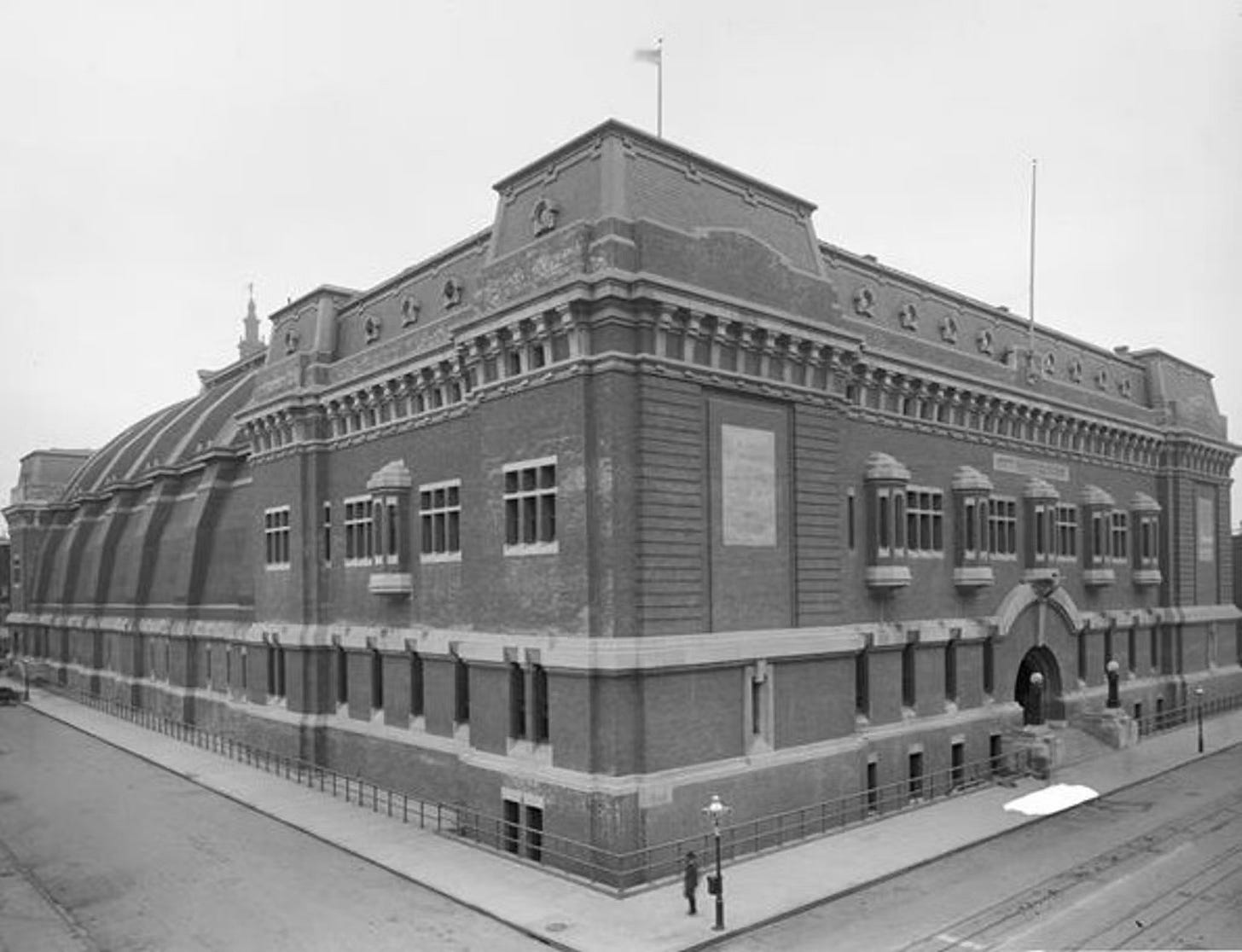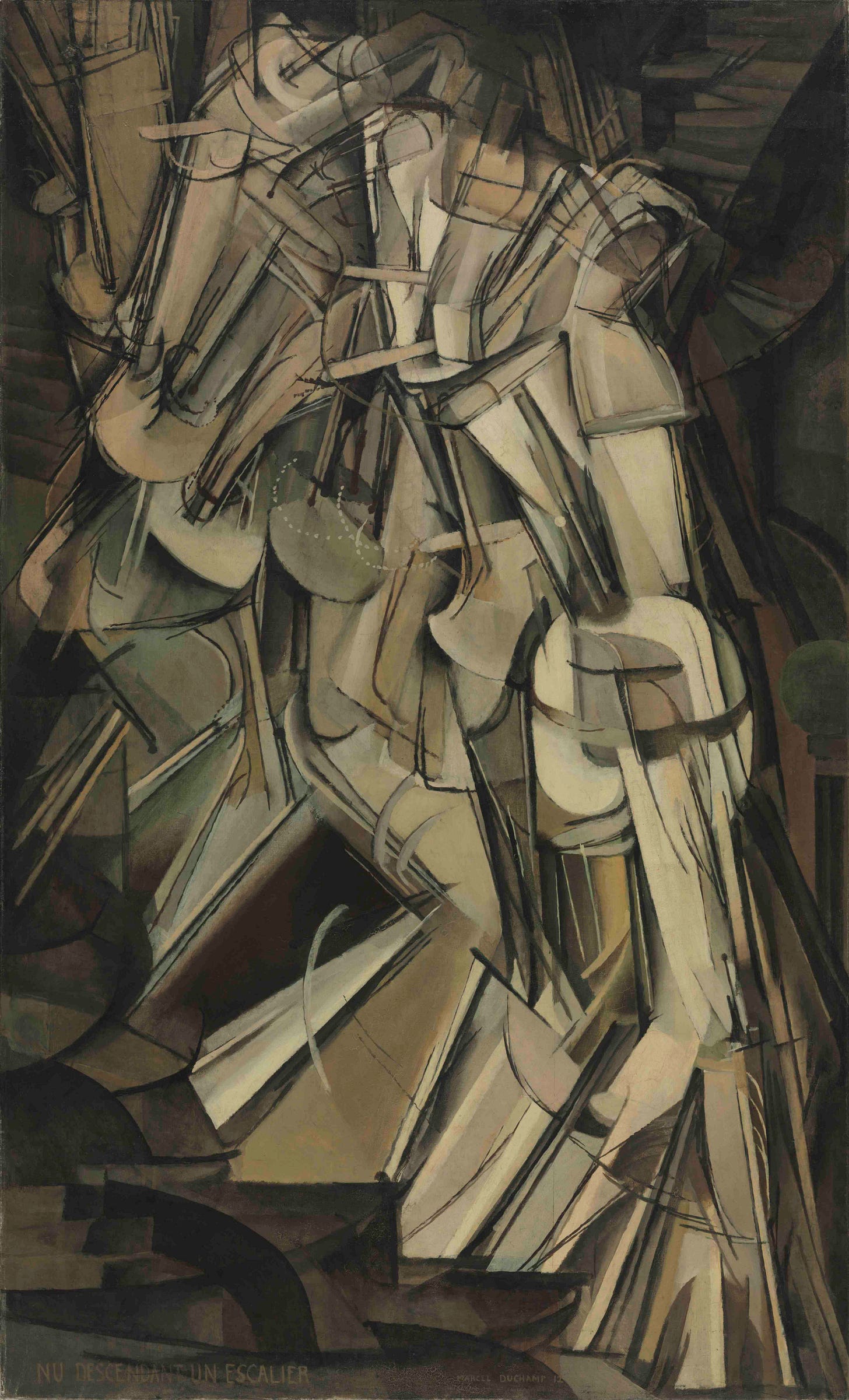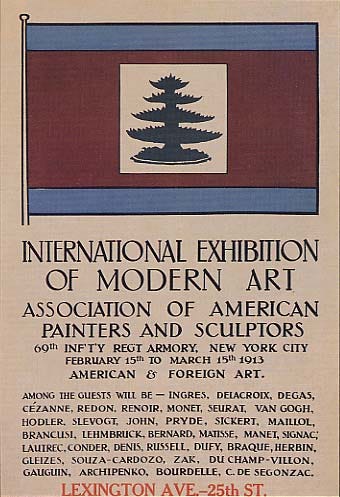Officially titled the International Exhibition of Modern Art, but forever remembered as the Armory Show, this landmark 1913 exhibit struck New York City like a lightning bolt. Held at the 69th Regiment Armory on Lexington Avenue—a venue better suited to military drills than to Matisse—it sent shockwaves through Manhattan. It must have felt like someone swapped the artillery for something equally explosive: modern art.
For most Americans, the Armory Show was the first close encounter with avant-garde movements like Cubism, Fauvism, and Futurism. Let's just say they weren't sure if they should laugh, scream, or come back with a magnifying glass to figure it all out. One of the most “explosive” pieces was Marcel Duchamp's Nude Descending a Staircase, No. 2, which used fragmented forms to create the illusion of motion.
Critics, scratching their heads, dubbed it “an explosion in a shingle factory.” Former President Teddy Roosevelt himself couldn’t resist chiming in, saying: “There is in my bathroom a really good Navajo rug which, on any proper interpretation of the Cubist theory, is a far more satisfactory and decorative picture.” With an eyebrow raised, mainstream America squinted at Duchamp's work as if Martians had just landed in Times Square.
Nonetheless, Cubism's bold reimagining of form and space had a particularly profound influence and laid the groundwork for countless American artists to rethink their approaches and modernize their work. The Armory Show shone a spotlight on the clear divide between American academic art style and European modernists—what some might call the difference between “Can-do Realism” and “What-on-Earth-ism.”
The show was cooked up by the freshly minted Association of American Painters and Sculptors, founded shortly before the exhibit to promote new art. With that goal in mind, they also they invited American artists dabbling in abstraction, planting the seeds for the country’s own modern art movements. But shortly after the show, the Association seemed to fall apart—perhaps overwhelmed by the glorious chaos they had unleashed!
The Armory Show transformed New York into a budding art capital and catapulted the American art scene out of the Victorian era and into the heady unknowns of the 20th century. It was official: New Yorkers were seeing stars and turned from art backwater to a force in the global art world. Cheers to that!
Art needs more eyes — and so does this blog.
It’s free to read, but only grows if it travels.
Liked it even a bit? Tap the heart.
A line stuck with you? Drop it in a comment.
Smiled once? Hit restack.
Want to keep this writing alive? Send it to a curious friend to subscribe.






